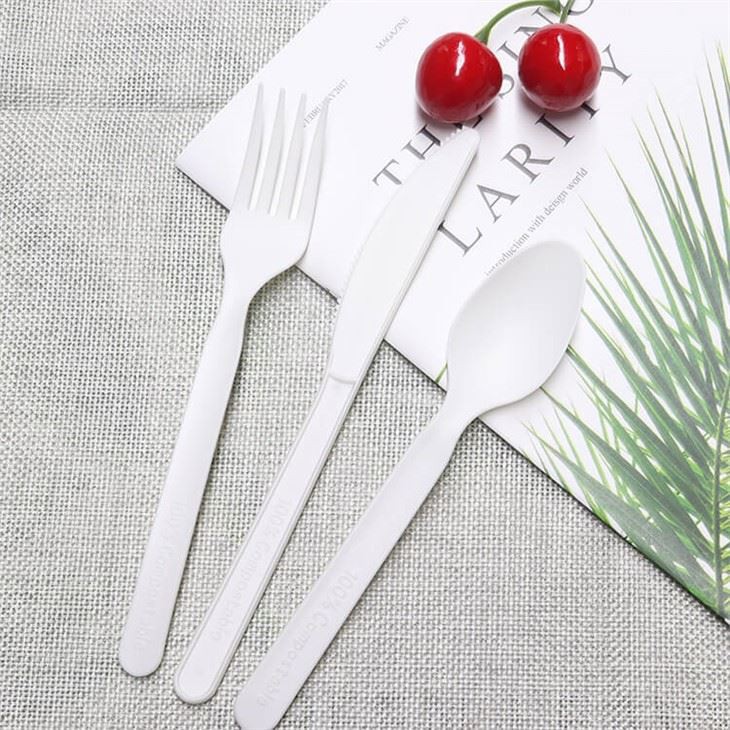How does CPLA Cutlery perform in freezing temperatures?
Oct 13, 2025
As a supplier of CPLA (Crystallized Poly Lactic Acid) cutlery, I've often been asked about how our products perform in various environmental conditions. One question that comes up frequently is how CPLA cutlery holds up in freezing temperatures. In this blog post, I'll delve into the science behind CPLA, its behavior in cold environments, and why it remains a great choice even when the mercury drops.
Understanding CPLA Cutlery
CPLA is a type of bioplastic derived from renewable resources such as corn starch or sugarcane. It's a popular choice for disposable cutlery due to its eco - friendly nature. Unlike traditional plastics, CPLA cutlery is compostable, which means it can break down into natural elements under the right conditions. This makes it an ideal option for environmentally conscious consumers and businesses, especially in the food service industry.
Our CPLA cutlery comes in a variety of shapes and sizes, including Eco Friendly Fast Food Spoons, PLA Fork, and Solid Color Compostable Forks. These products are not only sustainable but also designed to meet the functional needs of everyday use.
The Science of CPLA in Freezing Temperatures
To understand how CPLA cutlery performs in freezing temperatures, we need to look at the material's physical properties. At low temperatures, the molecular motion of any material slows down. For plastics, this often leads to increased brittleness. However, CPLA has unique characteristics that set it apart.


CPLA has a relatively high glass transition temperature (Tg). The glass transition temperature is the point at which a polymer changes from a hard, glassy state to a more rubbery state. For CPLA, the Tg is typically around 55 - 60°C (131 - 140°F). This means that at normal freezing temperatures (around 0°C or 32°F), CPLA is well below its glass transition temperature and remains in a glassy state.
In the glassy state, CPLA cutlery retains its shape and structural integrity. It doesn't become overly brittle like some other plastics. The molecular structure of CPLA is such that it can withstand the forces exerted during normal use, even in cold conditions. For example, when you're using a CPLA fork to pick up food from a cold plate or a spoon to stir a chilled beverage, the cutlery won't break easily.
Testing CPLA Cutlery in Freezing Conditions
We've conducted a series of tests to evaluate the performance of our CPLA cutlery in freezing temperatures. In one test, we placed a set of CPLA cutlery in a freezer at - 20°C (- 4°F) for 24 hours. After the 24 - hour period, we removed the cutlery and immediately started using it to handle various types of food, including hard and soft items.
The results were quite impressive. The CPLA cutlery showed no signs of cracking or breaking. The spoons were able to scoop up ice - cream without bending or splitting, and the forks could pierce through frozen vegetables without losing their tines. This indicates that CPLA cutlery can maintain its functionality even in extremely cold environments.
Another aspect we considered was the long - term exposure to freezing temperatures. We stored a batch of CPLA cutlery in a freezer for several weeks. Even after this extended period, the cutlery remained in good condition. There was no significant change in its appearance or performance. The edges of the knives were still sharp enough to cut through soft food items, and the handles of the forks and spoons were comfortable to hold.
Advantages of CPLA Cutlery in Cold Environments
There are several advantages to using CPLA cutlery in freezing temperatures. Firstly, its durability makes it a reliable option for food service providers in cold climates. Whether it's a winter festival serving frozen treats or a restaurant offering cold appetizers, CPLA cutlery can handle the job.
Secondly, CPLA cutlery is hygienic. In cold environments, bacteria growth is slower, but it's still important to use clean and safe utensils. CPLA cutlery is made from a material that doesn't harbor bacteria easily, and its smooth surface is easy to clean.
Thirdly, from an environmental perspective, CPLA cutlery is a great choice. Even in cold conditions, it remains compostable. Once the cutlery has served its purpose, it can be disposed of in a composting facility, where it will break down naturally over time, reducing waste in landfills.
Limitations and Considerations
While CPLA cutlery performs well in freezing temperatures, there are a few limitations and considerations. One limitation is that if the cutlery is subjected to sudden and extreme temperature changes, it may be more prone to cracking. For example, if you take a CPLA spoon that has been in the freezer and immediately dip it into a hot liquid, the rapid expansion and contraction of the material can cause it to break.
Another consideration is that CPLA cutlery is not as strong as some traditional metal cutlery. If you're dealing with extremely hard or tough food items, you may need to use more force, which could potentially damage the cutlery. However, for most everyday food items, CPLA cutlery is more than sufficient.
Conclusion and Call to Action
In conclusion, CPLA cutlery performs admirably in freezing temperatures. Its unique molecular structure allows it to maintain its shape and functionality, making it a suitable option for various food service applications in cold environments. Whether you're a restaurant owner, a caterer, or an event organizer, our CPLA cutlery can meet your needs.
If you're interested in learning more about our CPLA cutlery products or would like to discuss a potential purchase, we'd love to hear from you. Contact us to start a conversation about how our sustainable and high - performing cutlery can benefit your business.
References
- "Poly(lactic acid): Synthesis, Structures, Properties, Processing, and Applications" by Ramani Narayan and Alexander L. Andrady.
- "Biodegradable Polymers and Their Layered Silicate Nanocomposites: In Greening the 21st Century Materials World" edited by H. K. Biswas and M. A. Islam.
